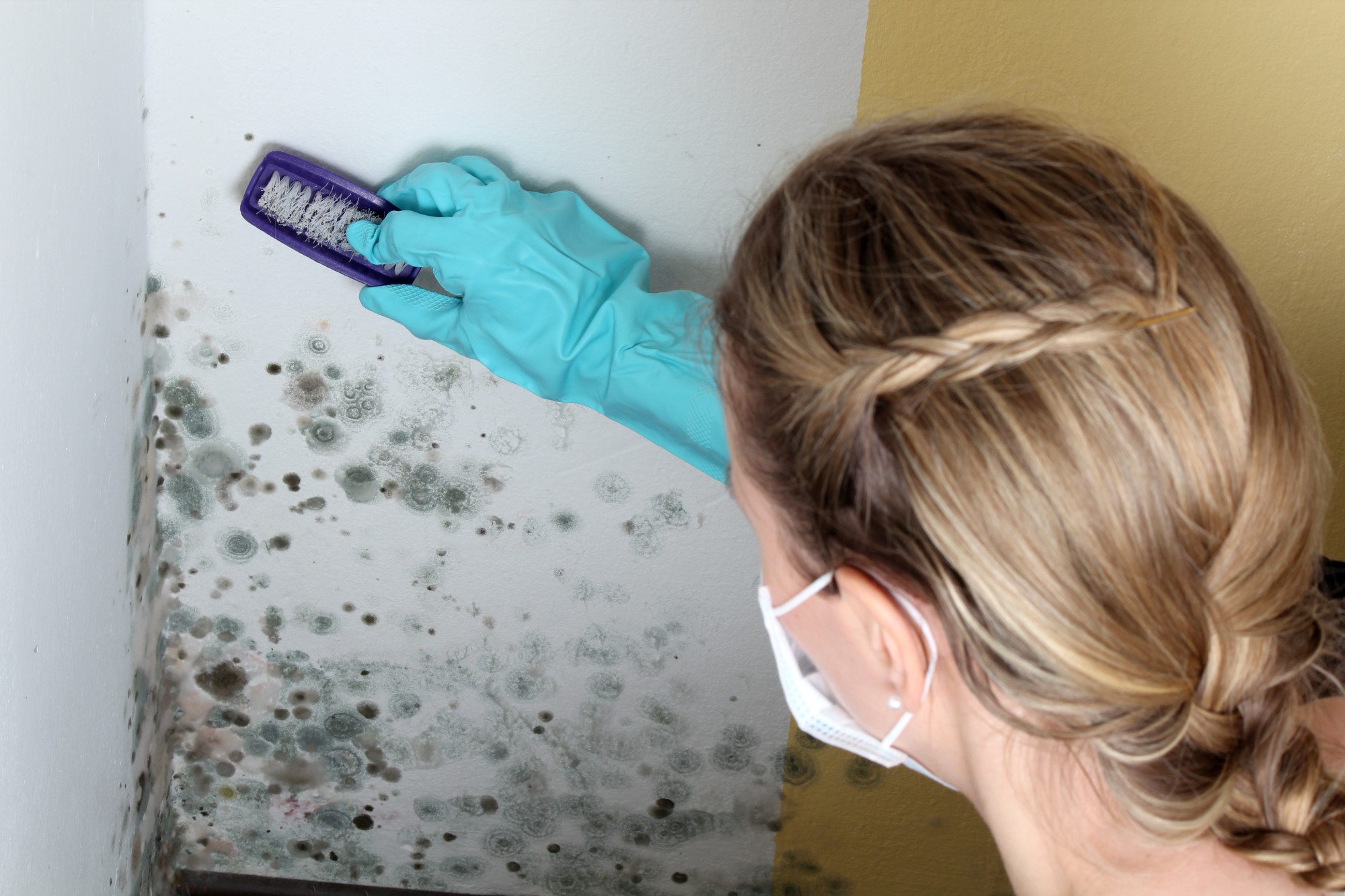You’ve noticed a bit of mold growing in your bathroom or basement and your first thought is, “How big of a deal is this?” After all, it isn’t a huge amount of mold growth and it may even be in a low-traffic area of your home.
The reality is that any amount of mold in your home is bad news. Mold growth indoors can cause or exacerbate a variety of health problems, especially respiratory issues like allergies or asthma.
You’re going to want to tackle that mold growth right away while avoiding common errors in mold removal. Not only is mold hazardous, but it’s also tricky to get rid of.
Read on for seven common errors in the mold removal process and how to avoid them.
Contents
1. Neglecting Early Signs of Mold
You might notice mold growth when it visibly appears on surfaces around your home. You may start to suspect mold growth thanks to its musty odor.
Many homeowners assume that mold problems can wait and won’t get worse quickly. The truth is that many types of mold can grow at a rapid pace and may spread to other rooms, especially if mold spores become airborne. It’s important that you take action as soon as you suspect mold growth by further investigating the area and using the proper mold removal equipment.
2. Using the Wrong Mold Removal Supplies
Speaking of mold removal equipment, many homeowners use the wrong supplies and don’t understand why their efforts aren’t working. One common misconception is that bleach will kill mold on porous surfaces like wood or grout. You may notice that mold appears lighter after applying bleach, but bleach doesn’t actually kill the roots, meaning the mold will return.
When you purchase a store-bought cleaner, make sure that it is designed for mold removal and the surface you’re cleaning. If you have a small mold problem, a mixture of white vinegar and water may do the trick.
3. Removing Mold Without Protective Gear
As we mentioned earlier, mold can lead to respiratory upset. You might experience irritation in the nose, eyes, and throat. In severe cases, you may experience difficulty breathing, headaches, and a change in vision.
If all of this can happen when mold is growing in your home, imagine what happens when you start to disturb that mold growth. You should always wear protective gear like a face mask, goggles, and gloves when you’re cleaning mold. After dealing with mold and cleaning supplies, wash your hands before touching your face.
4. Removing Mold Without Sealing Off the Area
Mold spreads from one room to another when spores become airborne. Mold can already emit spores on its own and you can expect that to increase when you’re scrubbing it or otherwise disturbing it. If those spores travel from one room to another, you may end up with additional growth around the house.
Before you begin the cleaning process, seal off the affected area. The best way to do this is to cover any entryways and vents with plastic tarps. Remember, you don’t want mold spores to end up in your ventilation system, where they are difficult to remove and can easily spread all over the house.
5. Ignoring the Cause of Mold
Preventing mold growth is just as important as removing mold growth. Mold doesn’t appear out of thin air and without cause, so if you notice mold somewhere in your home, there are conditions to address to prevent mold from returning.
The most important thing that mold needs to thrive is moisture. Chances are high that the area where you’ve discovered mold is either high in humidity or the site of a leaking pipe. Reduce moisture by installing a dehumidifier and having any faulty plumbing addressed.
6. Covering Mold Instead of Removing It
When you begin your search for information about mold removal, you’re probably going to come across products like mold-resistant paint. You may also see suggestions to cover moldy grout with new mold-resistant grout or sealant, rather than trying to kill the mold.
It’s important to understand the difference between mold resistance and mold removal. Mold-resistant products are preventative and will not help when you’re already dealing with a mold problem. You should only use mold-resistant products on surfaces that do not have any mold growth on them currently.
7. Attempting DIY Mold Removal in Serious Cases
If you tackle mold problems early on, you can probably handle them, yourself with store-bought products or “natural” solutions like white vinegar. However, there are limitations when it comes to DIY mold removal. When mold growth gets out of control, you need to work with professionals to assess where it has taken over and how best to remediate the problem.
Take a look at the mold remediation services located here. As you can see, they offer a full suite of mold removal services, including testing and inspection. This is because mold growth can spread in ways that are undetectable, and it takes professional mold removal equipment and expertise to find it all and remove it effectively.
Skip the Errors in Mold Removal for Better Results
Do you have mold growth in your house? Don’t delay in tackling the problem. Use this guide to make sure that you don’t fall into the trap of common errors in mold removal so that you can rest assured that you’ve gotten rid of all of the mold and prevented its return.
Looking for more ways to protect your home and your health? Take a look around as we offer tips, tricks, and guides that will keep you on top of the latest news and trends.

